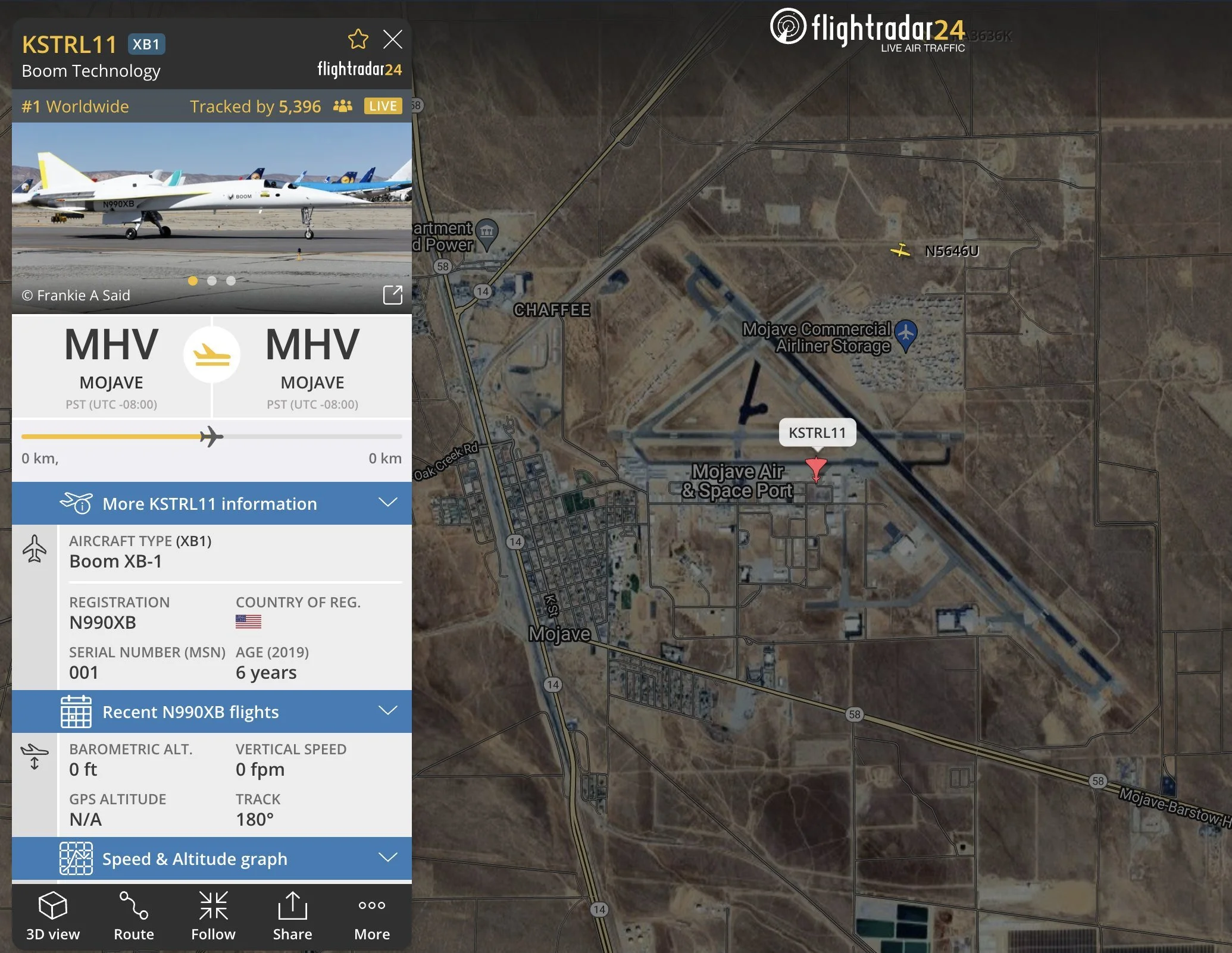XB-1 takes flight, reaches supersonic speeds for the first time
JANUARY 28, 2025 at Mojave Air and Space Port, California — Boom Supersonic’s demonstrator aircraft named XB-1 recently made a historic test flight, reaching speeds that made it break the sound barrier/speed of sound for the first time in its series of development tests. Piloted by Chief Test Pilot Tristan "Geppetro" Brandenburg, he piloted the aircraft to reach 35,290 feet while accelerating to Mach 1.122, (or 1207 km/h; 750 mph) which is ~25 to 34% faster than today's commercial aircraft only cruise at subsonic speeds. Because of that, he became the pilot of the first ever independently developed supersonic jet that made such a feat.
Being part of the aerospace industry, Boom Supersonic aims to develop aircraft that reach supersonic speeds, faster than most commercial jets operate today. With test flights like this, it hopes in the future to develop its full-scale supersonic aircraft, Boom Overture, which is designed for cruising at Mach 1.7 or 975 knots (or 1,806 km/h; 1,122 mph), even faster than the one used in this test flight. One of the feats also included in this test flight is the use of a Starlink Mini satellite, which worked exceptionally well in this test flight, sending live footage and data from the supersonic aircraft back to the monitor stations on the ground, proving another capability of how technologies could co-exist to provide better experiences for future customers and travelers.
XB-1 Aircraft Specifications (short summary from Wikipedia)
Crew: 1 (design allows for a second seat)
Length: 68 ft (21 m)
Wingspan: 17 ft (5.2 m)
Height: 17 ft (5.2 m)
Max takeoff weight: 13,500 lb (6,123 kg)
Engines: 3 × GE CJ610-15 turbojet, 4,300 lbf (19 kN) thrust each
Maximum speed: Mach 2.2
Range: 1,000 nmi (1,200 mi, 1,900 km)
Connectivity (bonus): SpaceX Starlink Mini
XB-1 First Supersonic Flight Profile (data from Boom’s Live and FlightRadar24 replay)
NOTE: This information is approximate and maybe delayed by a very short amount of time.
3:57 PM UTC: Aircraft turned on and shows on the FlightRadar24 tracking data.
4:08 PM UTC: Aircraft shows possible signs of movement, and slowly goes to the runway (taxiing) in preparation for take-off
4:21 PM UTC: Aircraft rolls off the runway, full thrust on all engines activated, and takes off to the skies.
4:33 PM UTC: Aircraft reaches supersonic speeds (first time).
4:36 PM UTC: Aircraft is back to subsonic speeds (first time).
4:38 PM UTC: Aircraft returns to supersonic speeds (second time).
4:38 PM UTC: Aircraft is back to subsonic speeds (second time).
4:43 PM UTC: Aircraft is back to supersonic speeds (third time).
4:45 PM UTC: Aircraft is back to subsonic speeds (third time).
4:46 PM UTC: Aircraft throttles its three engines down to ~35% to 40%, and gets landing clearance/confirmation.
4:52 PM UTC: Aircraft landing gear is deployed.
4:55 PM UTC: Aircraft landing gear touches down and slows down, returns near the hangar later on.
5:00 PM UTC: Aircraft comes to a full stop, officially ending the successful mission.
Extra remarks on the flight
The test flight was highly successful, proving the supersonic capabilities that XB-1 can do to pave the way for the future supersonic plane of Boom Supersonic, the Overture aircraft.
The Overture aircraft will be the actual, full-scale version of this current testing prototype, which plans to make air travel revolutionary and faster than ever before. Just like the late Concorde, it will carry passengers in quicker ways as possible, while Overture will just be the innovative and new version for this generation.
If you are wondering why they went supersonic and subsonic back and forth three times? One of the most likely reasons is that the test could have followed strict airspace and regulatory limits. Controlled supersonic runs ensured the aircraft complied with FAA guidelines and stayed within designated testing corridors.
It could also be done to collect data and validate the aircraft operations while in these types of transient regions, going from supersonic to subsonic multiple times and vice versa to ensure the safety and capacity of the aircraft.
As aerospace and spaceflight fans, there is one more technology that did well in this flight, Starlink Mini. The SpaceX-made satellite utilized on the plane also worked exceptionally well, carrying live footage and data from the aircraft and back to us here on the ground. In fact, they also featured the journey of testing Starlink in this case scenario which can be clicked here: (Boom - FlyBy - The Starlink Connection: XB-1 Flight Tests Harness Satellite Internet Streaming)
This is KYNNMASTER 123 for The Weekly Spaceman, see you in the next one! 😊
Sources and Credits (photos in order):
Sources and Credits (text sources and statements):


